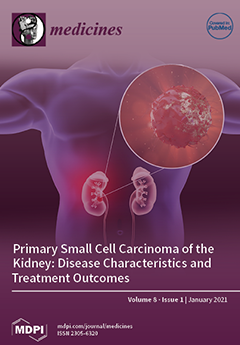Helicobacter pylori (
H. pylori) is a bacterial pathogen implicated in gastritis, gastric ulceration, and gastric carcinoma. This study aimed to synthesize literature in providing evidence on the causative role of
H. pylori in gastric carcinoma development. This study is based on
[...] Read more.
Helicobacter pylori (
H. pylori) is a bacterial pathogen implicated in gastritis, gastric ulceration, and gastric carcinoma. This study aimed to synthesize literature in providing evidence on the causative role of
H. pylori in gastric carcinoma development. This study is based on assessing public literature using an applied meta-analysis, namely, quantitative evidence synthesis (QES). The analytic procedure uses DerSimonian-Laird, including assessing heterogeneity. The QES also utilizes meta-regression and the environmental effect associated with
H. pylori in gastric cancer development. Eighteen studies are included in the QES. There is increased prevalence of
H. pylori exposure among the cases. The heterogeneity between the CES and individual effect sizes is also significant. Despite controlling for the confoundings, there is increased exposure to
H. pylori among the gastric cancer cases, regardless of the differences in the geographic location.
H. pylori in this synthesized literature illustrates the contributory role of this microbe in gastric carcinoma. Additionally, regardless of geographic locale, namely, South Korea or Spain,
H. pylori is implicated in gastric cancer development.
Full article




